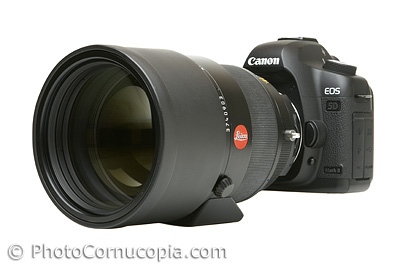In a word, yes, but it depends on the
lens and what it is designed for. Many macro
lenses are designed for optimal performance close to wide open. Most
lenses, like yours, primes or any common photographic
lens typically works better when stopped down at least one
stop and generally at least 2
stops. Performance tends to continue to improve until diffraction kicks in and limits the
lenses optical performance. For most
lenses this is between F8 and maybe even F16. Diffraction occurs much earlier with macro
lenses so they tend to be designed to perform best
close to wide open, but are always sharper stopped down a little. Some
lenses perform
almost as well wide open as they do stopped down but these are never cheap and are certainly exceptions, such as Leica R 180/2.0 and similar high end
lenses.
Yes, it's called sample variation but it's normally not a big issue. Some brands have very little sample variation due to stringent quality control, others have lots (anecdotal evidence only).
Roger Cicala from Lensrentals (in the US) has written some brilliant stuff about it and if you are going to read anything from anyone you should probably read some of Rogers stuff. He has access to vast amounts of high end
lenses and optical test gear, writes well and knows what he's on about. Start with these:
http://www.lensrentals.com/blog/2011...mera-variation
http://www.lensrentals.com/blog/2011...s-of-variation
http://www.lensrentals.com/blog/2012...k-ii-variation
You should always test using Live View to focus manually. AF is not consistent or reliable, IMHO.
You are doing the right thing to test your equipment and know it's limits. I think everyone should do that to some degree. I've written a short guide on the subject as it's something I often do with my own
lenses:
http://photocornucopia.com/1044.html
There's more to
lens performance than
sharpness alone so it's worth testing your gear and learning how it performs with respect to it's bokeh in various circumstances, vignetting, flare etc. depending on what matters most to you.







 Thanks useful information:
Thanks useful information:  80D, 600D, EFS 60mm Macro, Sigma 150-600mm F5-6.3 DG OS HSM Lens - Contemporary, Sigma 18-250mm 1:3.5-6.3 DC Macro OS HSM lens, EF-S 18-55mm f3.5-5.6 IS STM lens, EF-S 18-55mm f3.5-5.6 IS II lens, EF-S 55-250mm f/4-5.6 IS II lens, Yongnuo YN500EX flash, Velbon Sherpa 5370D tripod, PH-157Q head, Klika W1003 monopod, AF Macro Extension tubes, LED Ringflash Software: Darktable, Gimp, DigiKam
80D, 600D, EFS 60mm Macro, Sigma 150-600mm F5-6.3 DG OS HSM Lens - Contemporary, Sigma 18-250mm 1:3.5-6.3 DC Macro OS HSM lens, EF-S 18-55mm f3.5-5.6 IS STM lens, EF-S 18-55mm f3.5-5.6 IS II lens, EF-S 55-250mm f/4-5.6 IS II lens, Yongnuo YN500EX flash, Velbon Sherpa 5370D tripod, PH-157Q head, Klika W1003 monopod, AF Macro Extension tubes, LED Ringflash Software: Darktable, Gimp, DigiKam





 Reply With Quote
Reply With Quote Add To Bookmarks
Add To Bookmarks


 Digital & film, Bits of glass covering 10mm to 500mm, and other stuff
Digital & film, Bits of glass covering 10mm to 500mm, and other stuff



 Threadstarter
Threadstarter




